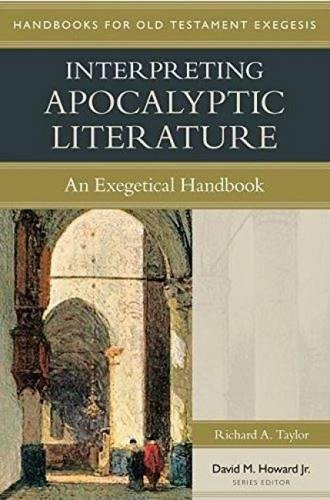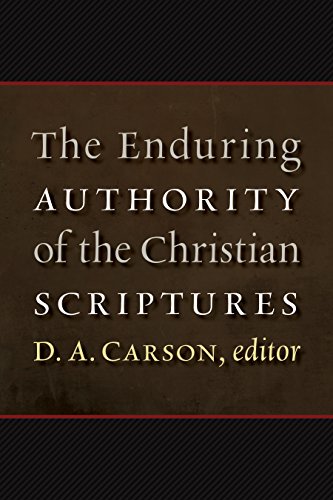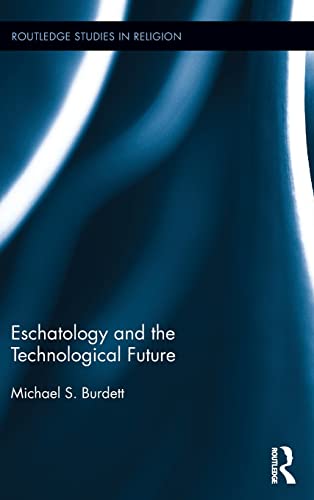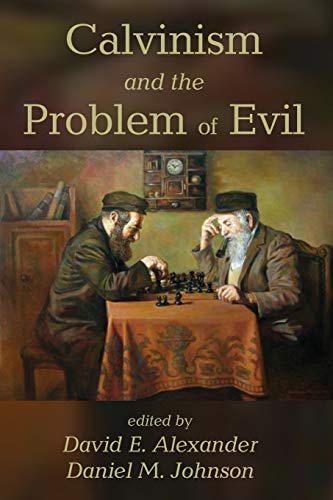Interpreting Apocalyptic Literature: An Exegetical Handbook
Written by Richard A. Taylor Reviewed By Aaron J. ChalmersTaylor has contributed a worthwhile volume to Kregel’s Handbooks for Old Testament Exegesis series, demonstrating an excellent grasp of the key features and themes of apocalyptic literature. Readers of his book will come away better equipped to face the challenges associated with interpreting this oftentimes confusing genre. Taylor serves as Senior Professor of Old Testament Studies at Dallas Theological Seminary, but his institution’s well-known focus on dispensational teaching is not strongly present in the book.
Taylor’s work is divided into six key chapters followed by a significant appendix. In chapter one, he focuses on the nature of apocalyptic literature, helpfully defining and distinguishing a number of key terms, including ‘apocalypse’, ‘apocalypticism’, ‘apocalyptic eschatology’, etc. In chapter two, he introduces the reader to some of the key apocalyptic texts (both biblical and non-biblical) and unpacks some of their characteristic features and themes. Chapter three is designed to prepare the interpreter for engaging with apocalyptic literature, with a helpful discussion of figurative language (including simile, metaphor, metonymy, hypocatastasis, and synecdoche). In chapter four he highlights some of the key paths to follow along with some pitfalls to avoid. These guidelines provide the basis for chapter five where he outlines a seven-stage, practical strategy for interpreting and proclaiming apocalyptic literature, which is then applied in chapter six to two sample texts that fall under Taylor’s definition for this genre due to their use of figurative language (Dan 8:1–27; Joel 2:28–32). The book concludes with an appendix in which Taylor traces some of the antecedents of apocalyptic literature which have been suggested by modern scholars.
There is much in Taylor’s work to be praised, and I would recommend his work to anyone who is scratching their head over descriptions of great beasts emerging out of the sea or images of cosmic judgement and upheaval. He has a pleasant, engaging style of writing that will work well for students. His terminological clarity, including his distinction between ‘apocalypse’ as a genre and ‘apocalypticism’ as a way of thinking (though I prefer the term ‘worldview’, which he does use occasionally), will be helpful for students as they attempt to chart their way through these challenging waters. Likewise, the cautions he provides on pp. 127–31 help to address some of the common problems that inexperienced exegetes face. I particularly liked his assertion: ‘Few things are more essential for an interpreter of apocalyptic literature than a humility that admits the limits of our knowledge and refuses to go beyond the clear data of the text’ (p. 128). The glossary, which is found at the back of the book, is an excellent inclusion and rounds the text out as a fine introduction to the genre, especially for beginning students.
This being said, I would highlight three concerns that detract from the work. Generally speaking, these are not significant issues, and may well reflect the personal preferences and predilections of the reviewer.
Firstly, I am a little confused about the scope of the book. The series is entitled ‘Handbooks for Old Testament Exegesis’ (emphasis mine), yet on the front cover the relevant texts are listed as ‘Daniel, Prophets and Extrabiblical Texts’ (also my emphasis). It is the place of the latter in particular that raises a question mark for this reviewer. While there is clearly a basis for including some discussion of these (Taylor himself provides a succinct apologetic on p. 27), I would question whether they warrant receiving the attention they do, given that (1) the text is primarily written for an evangelical audience whose focus is the biblical text itself, and (2) these texts were almost certainly written after the canonical OT examples of apocalyptic (or proto-apocalyptic). In my opinion, it would have been better for Taylor to focus more on the antecedents to apocalyptic literature (moving some of the material in the appendix to the main body of the book) as well as expanding his discussion of proto-apocalyptic material within the Prophets (especially Zechariah), as these provide the essential background and context for understanding the book of Daniel.
Secondly, I would want to push Taylor a bit when it comes to issues of application. For example, on p. 95 he argues that the final stage of handling figures of speech is to transform them ‘into corresponding prose statements that clearly articulate their intended meaning in nonfigurative language’ (p. 95). I would argue, however, that this is the penultimate stage; surely the ultimate goal should be to recast these figures in a contemporary way, which engages the audience in the same way as the original language did. Indeed, part of the power of apocalyptic literature comes precisely from the fact that it is not full of prose statements, but evocative language and imagery.
By contrast, I really like the format and process he later develops in chapter five (‘Proclaiming Apocalyptic Literature’), which culminates in a section entitled ‘Bridging to Application’. Here Taylor points out, ‘Most listeners want to know what difference a biblical text should make in their personal lives…. The question that believers are most interested in resolving as a result of biblical proclamation is: How should we then live?’ (p. 150). Yet when he considers Daniel 7 (pp. 150–51), Daniel 8 (pp. 168–69), and Joel 2:28–32 (pp. 177–78), his discussions remain almost entirely at the level of the passage itself and do not go on to consider how the message of the passage might directly and practically impact the lives of its hearers. In other words, Taylor does not adequately address the key question which he himself has identified as central (‘How should we then live?’). Unfortunately, it is precisely in this area—application that honours the teaching of the passage but which is grounded in the realities of contemporary life—that I think students need significant guidance.
Finally, on p. 108 Taylor claims that ‘the biblical apocalypses … should be studied within their historical, religious, and cultural settings’ (a point he essentially repeats on p. 121, where he states, ‘One cannot fully grasp portions of the book of Daniel without at least some understanding of the history of these times’.) This is an important point. In light of this, I was surprised to find that Taylor’s work contains no significant discussion of the history of the Second Temple period, a feature which would have aided students in their interpretive work. (Students may find the early chapters of Larry Helyer, Exploring Jewish Literature of the Second Temple Period [Downers Grove, IL: InterVarsity Press, 2002], to be helpful in this regard).
Overall, however, Taylor has produced a valuable textbook that should find a place on the bookshelf of any student or pastor concerned with interpreting and preaching Daniel and other (proto-) apocalyptic sections of the OT.
Aaron J. Chalmers
Aaron J. Chalmers
Tabor College of Higher Education
Millswood, South Australia, Australia
Other Articles in this Issue
Gospel Differences, Harmonisations, and Historical Truth: Origen and Francis Watson’s Paradigm Shift?
by Frederik S. MulderClaiming to stand on the shoulders of the later Origen, in Gospel Writing: A Canonical Perspective, Francis B...
“For Your Sake We Are Being Killed All Day Long”: Romans 8:36 and the Hermeneutics of Unexplained Suffering
by David StarlingThis article explores the function of Paul’s citation from Psalm 44:22 within the rhetoric of Romans 8:31–39...
Many churches seem to have lost the art of singing lament...
Reflections on Handling the Old Testament as Jesus Would Have Us: Psalm 15 as a Case Study
by Dane C. OrtlundIn appreciation of the renaissance of christocentric and redemptive-historical hermeneutics and homiletics in our generation, this article selects an OT text, Psalm 15, that appears on the surface to be maximally resistant to a Christ-centered reading and preaching of Scripture...
This article examines the meaning of blessing as expressed in the structure and narratives of Genesis...







